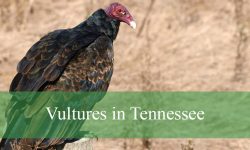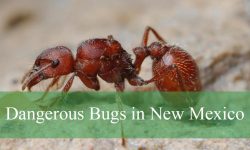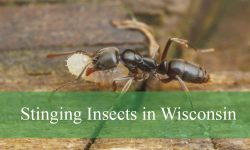In the warm and humid landscapes of South Carolina, ants thrive in great numbers, and a few species stand out for their painful bites and stings. For residents, gardeners, and hikers, knowing which species to watch for is an important step in avoiding unpleasant encounters.
These ants range from the notorious fire ants with their burning sting to the less aggressive but still bothersome pavement and odorous house ants. Each species has unique traits, nesting habits, and behaviors that make them fascinating yet, at times, frustrating insects to deal with.
This guide introduces eight biting ant species in South Carolina, providing identification details and insights into their behavior so you can recognize them in nature, in the garden, or around the home.
Types of Biting Ants Found in South Carolina
Red Imported Fire Ant (Solenopsis invicta)
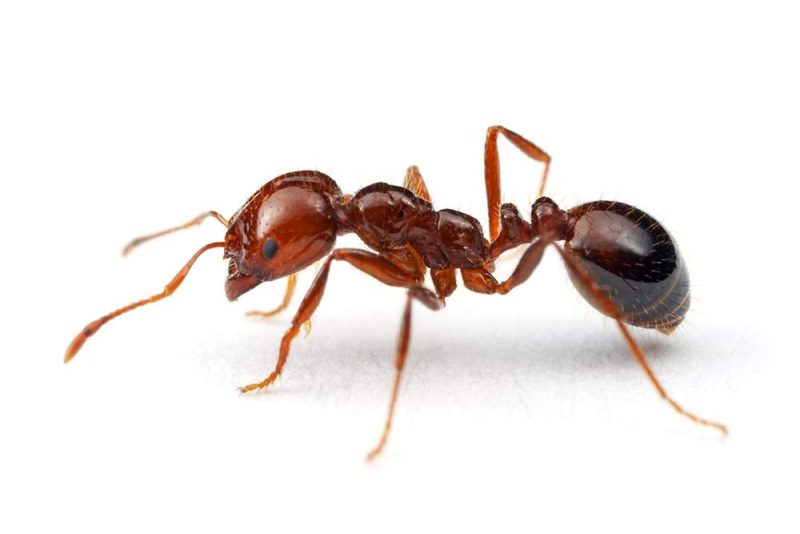
The Red Imported Fire Ant is one of the most infamous ant species in South Carolina, notorious for its painful sting and aggressive behavior. Originating from South America, this invasive species has spread widely across the southern United States. Their colonies often contain multiple queens, which helps them reproduce quickly and dominate landscapes. They are especially common in disturbed soils, fields, and suburban yards.
Physically, these ants are reddish-brown with darker abdomens and range from 2 to 6 millimeters in length. A single colony can have hundreds of thousands of workers, making them extremely difficult to eliminate once established. Their mounds can be quite large, often dome-shaped and up to 18 inches high, with no visible entrance hole on the top. This makes them stand out compared to other native ant species.
The sting of a Red Imported Fire Ant is both painful and medically significant. When disturbed, workers swarm aggressively and sting multiple times, injecting venom that causes a burning sensation followed by itchy, pus-filled blisters. In some cases, people may experience severe allergic reactions, making these ants a health concern. Their aggressive defense of colonies makes them one of the most dangerous ants to encounter.
Ecologically, they pose a major threat to native wildlife, as they prey on insects, ground-nesting birds, reptiles, and even small mammals. Their presence reduces biodiversity and disrupts natural ecosystems. They also compete with and often eliminate native ant species, which further alters local ecological balances.
For homeowners and farmers, these ants are a constant nuisance. They damage electrical equipment, infest pastures, and make lawns unsafe for children and pets. Effective control often requires professional treatments with specialized baits and insecticides, though complete eradication is nearly impossible due to their resilience and wide distribution.
Southern Fire Ant (Solenopsis xyloni)
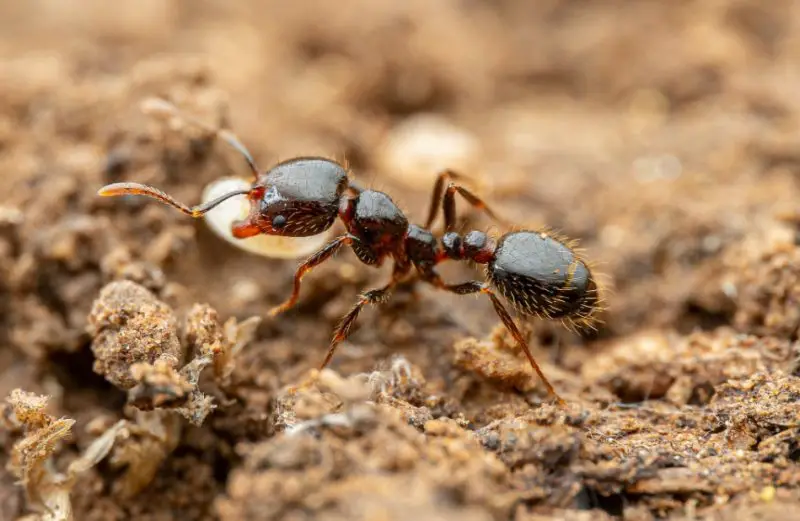
The Southern Fire Ant is another stinging species found in parts of South Carolina, although it is less dominant than the Red Imported Fire Ant. Native to the southern United States, these ants have adapted well to warm climates. They typically nest in soil, under rocks, or near buildings, forming large colonies that can be aggressive if disturbed.
These ants are usually reddish-brown with darker abdomens, similar in appearance to their invasive relatives, though slightly smaller on average. Worker ants range from 2 to 5 millimeters, and their colonies often contain thousands of individuals. Their nests may not always form large visible mounds, which can make detection more challenging.
The sting of a Southern Fire Ant can be painful, though generally considered less intense than that of the Red Imported Fire Ant. Nevertheless, they can sting repeatedly, and the venom may cause localized burning, itching, and swelling. For sensitive individuals, allergic reactions remain a risk, meaning caution is always necessary when dealing with them.
Southern Fire Ants are omnivorous, feeding on a wide variety of food sources. They scavenge dead insects, consume seeds, and are attracted to sugary substances. This dietary flexibility allows them to thrive in both natural and urban environments. In agricultural settings, they may damage crops and protect plant-feeding insects like aphids in exchange for honeydew.
Although less invasive than Solenopsis invicta, the Southern Fire Ant is still considered a pest due to its aggressive behavior and painful sting. Their colonies can re-establish quickly after disruption, making them difficult to eliminate. Integrated pest management strategies that combine baiting and habitat modification are typically recommended to control their spread.
Carpenter Ants (Camponotus species)
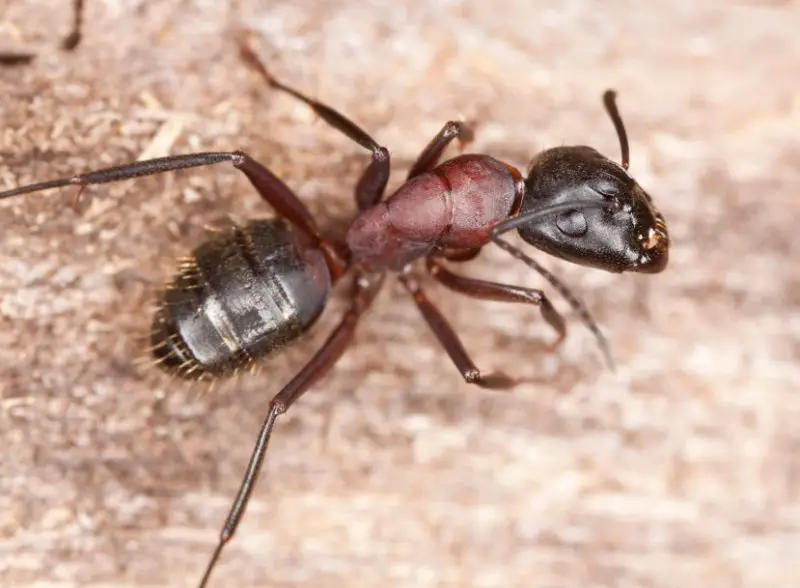
Carpenter Ants are among the largest ant species in South Carolina, with workers often measuring between 6 and 13 millimeters long. Unlike fire ants, they do not sting, but they can deliver a strong bite with their large mandibles. Additionally, some species spray formic acid into the wound, which can cause extra irritation and discomfort.
These ants are usually black, reddish, or a combination of both colors, depending on the species. Carpenter Ants are easily distinguished by their size and the smoothly rounded profile of their thorax when viewed from the side. Colonies may be located in decaying wood, tree stumps, or structural timber in homes, which is where they earn their name.
While they do not consume wood like termites, Carpenter Ants excavate galleries within it to create nesting space. This behavior can weaken structures over time, leading to costly damage in homes and buildings. Infestations are often detected by the presence of wood shavings or the rustling sounds of ants moving inside walls.
Carpenter Ants primarily feed on sugary substances, such as honeydew from aphids, plant nectar, and household food scraps. They also hunt insects and scavenge for protein sources. Colonies can be large and may establish satellite nests, which makes eradication more difficult. Effective control usually involves finding and eliminating the parent colony.
Although they do not pose the same medical risks as fire ants, Carpenter Ants are still significant pests in South Carolina due to their potential for structural damage. Preventing infestations requires sealing cracks, removing decaying wood near homes, and reducing moisture sources that attract them. Professional inspections are often necessary to manage severe infestations.
Odorous House Ant (Tapinoma sessile)
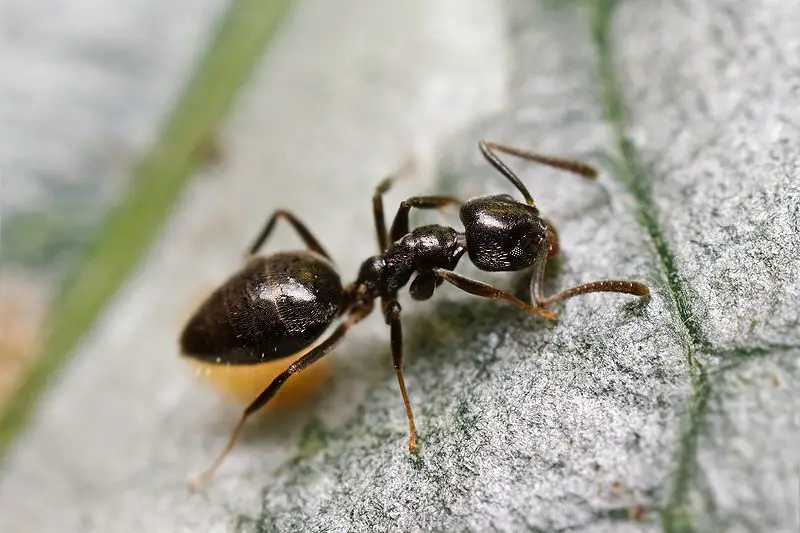
The Odorous House Ant is a small but persistent species found throughout South Carolina. They are named for the distinctive, rotten-coconut smell they release when crushed. Although they do not sting, these ants can bite, and their sheer numbers make them a common nuisance pest in homes and gardens.
Workers are typically 2.5 to 3.5 millimeters long and brown to black in color. Colonies can be very large, often containing multiple queens and thousands of workers. They are highly adaptable, nesting under logs, stones, mulch, and inside wall voids of homes. Their nests are frequently moved in response to environmental changes or disturbance.
These ants are most notorious for invading kitchens and pantries in search of sugary foods. They are particularly attracted to sweets, honey, and soft drinks but will also feed on proteins and greasy substances. Their foraging trails are easily observed, as they travel in long lines toward food sources both indoors and outdoors.
Unlike fire ants, Odorous House Ants are not aggressive and rarely bite people. However, their persistence makes them difficult to control once inside a home. Colonies can split and form new nests when threatened, a behavior known as budding, which makes chemical control less effective if not properly targeted.
Although they do not cause direct structural damage, their presence indoors is frustrating for homeowners. Keeping kitchens clean, sealing entry points, and reducing moisture near foundations can help prevent infestations. Professional pest control may be required for severe invasions, especially since colonies can rebound quickly after partial elimination.
Pavement Ant (Tetramorium species)
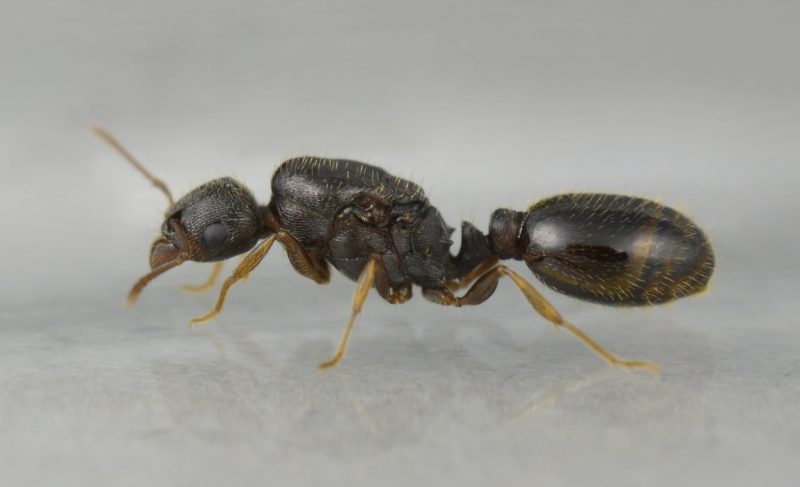
Pavement Ants are among the most common urban ant pests in South Carolina, often found nesting in sidewalks, driveways, and building foundations. Their name comes from their tendency to build small mounds of displaced soil between cracks in pavement or along concrete edges. These ants are well adapted to city life and thrive in areas where people live and work.
Workers are small, usually 2.5 to 4 millimeters in length, and dark brown to black in color. Under magnification, they have parallel grooves running across their head and thorax, which distinguishes them from similar-sized species. Colonies are typically moderate in size but can number in the tens of thousands, with multiple queens contributing to reproduction.
Although Pavement Ants do not sting, they are capable of biting. Their bite is not particularly painful, but combined with their persistence and numbers, it can still be unpleasant. Pavement Ants are known to engage in large “wars” with rival colonies, where thousands of ants fight in massive battles over territory. These conflicts are sometimes visible on sidewalks during warm weather.
Their diet is highly versatile, including sweets, proteins, seeds, and grease. Indoors, they are common pantry pests, contaminating food with their foraging activity. Outdoors, they scavenge widely and are capable of nesting beneath stones, logs, or other ground-level structures. Their flexible food preferences make them resilient and difficult to eliminate completely.
For homeowners, Pavement Ants are more of a nuisance than a danger. However, their constant foraging trails and ability to enter buildings make them one of the most persistent household invaders. Sealing cracks, maintaining clean food storage, and using ant baits can help reduce their presence, but long-term control often requires professional treatment.
Argentine Ant (Linepithema humile)
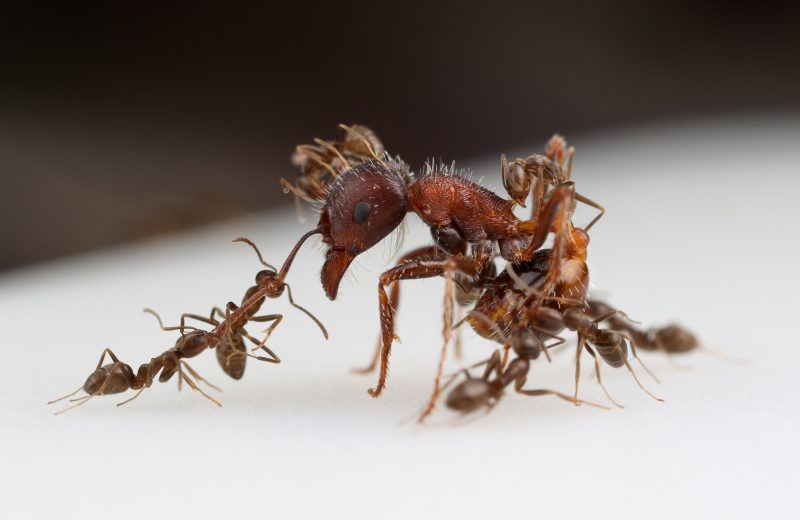
The Argentine Ant is a highly invasive species that has established itself in parts of South Carolina. Native to South America, this ant was accidentally introduced to the United States in the late 1800s. Since then, it has spread aggressively throughout the Southeast, forming enormous colonies that displace native ant species and disrupt ecosystems.
Workers are small, about 2.5 to 3 millimeters long, and light to dark brown in color. Unlike some other ants, they lack a stinger, but they can bite, though the bite is mild and not typically painful. The key characteristic of Argentine Ants is their ability to form “supercolonies,” with multiple interconnected nests that may contain millions of workers and many queens.
Argentine Ants are relentless foragers, often entering homes in search of food and water. They prefer sugary substances like honey, fruit, and nectar but will also consume proteins such as insects. Indoors, they can contaminate food supplies, while outdoors, they tend to protect honeydew-producing insects such as aphids, mealybugs, and scales, which can worsen plant infestations.
Ecologically, Argentine Ants are a major concern. Their supercolonies push out native ant species and reduce local biodiversity. They can even impact bird populations by preying on eggs and chicks or by reducing the availability of native insects. Their dominance over natural habitats has earned them a place on the list of the world’s most destructive invasive species.
Controlling Argentine Ants is notoriously difficult because of their massive colony structure. Traditional insecticide treatments often fail, as eliminating one part of the colony simply causes it to rebound from another nest. Effective management requires long-term baiting strategies and habitat modification to reduce nesting opportunities.
Graceful Twig Ant (Pseudomyrmex gracilis)
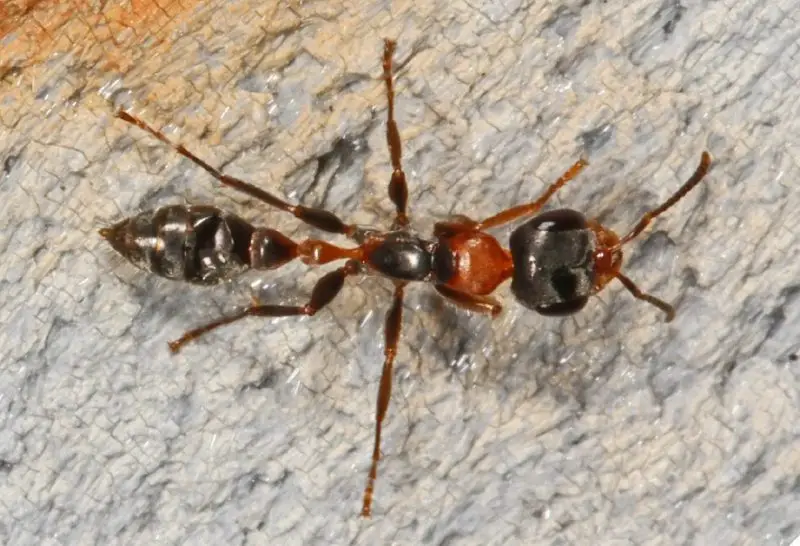
The Graceful Twig Ant is a slender, wasp-like ant species that is occasionally encountered in South Carolina. Unlike many other ants, it has an elongated body, long legs, and large eyes, giving it a distinctive appearance. It is primarily an arboreal species, nesting in hollow twigs and branches rather than in the soil.
Workers of the Graceful Twig Ant measure between 8 and 10 millimeters, making them larger than many common ant species in the region. They are reddish-brown to black in color, with a narrow waist and long antennae. Their wasp-like build often causes them to be mistaken for small wasps rather than ants. Colonies are relatively small compared to those of ground-nesting ants.
Unlike Carpenter Ants, these ants do not cause structural damage, but they do possess a sting. Their sting is painful and can be more intense than that of fire ants, though encounters are much less common. They sting primarily in defense, so people may be stung if they handle branches or plants where these ants are nesting.
Ecologically, Graceful Twig Ants play a role in controlling insect populations. They prey on small arthropods and sometimes feed on nectar or honeydew. Because of their arboreal lifestyle, they are less likely to invade homes, though they may be spotted around gardens or wooded areas. Their presence is generally neutral or even beneficial to the environment.
For homeowners and gardeners, these ants are usually not considered pests. However, their sting makes them a concern when encountered directly. Awareness of their presence and avoiding unnecessary contact with infested branches is usually sufficient to prevent problems. Unlike invasive ants, they are not aggressive colonizers and rarely require control measures.
Army Ants (Neivamyrmex species)
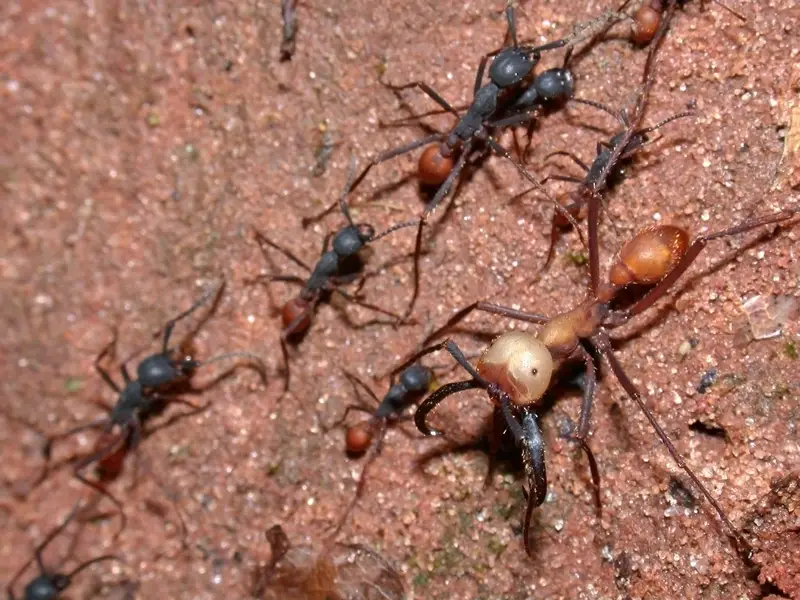
Army Ants are a rare but fascinating group of ants that can occasionally be found in South Carolina. These ants are nomadic predators, forming temporary colonies that move frequently in search of food. Their presence is sporadic, and they are not typically considered household pests, but they can deliver painful bites when disturbed.
Workers are small to medium-sized, depending on the species, and are generally pale to dark brown. They lack permanent nests, instead forming temporary bivouacs made up of their own bodies clumped together. Colonies are mobile, often relocating every few days as they deplete food sources in one area and move to another.
Army Ants are highly aggressive hunters, preying on insects, spiders, and other small arthropods. They forage in large coordinated groups, overwhelming their prey with sheer numbers. This predatory lifestyle makes them important ecological regulators, though it also contributes to their intimidating reputation.
Although they lack stingers, Army Ants have powerful mandibles that can deliver painful bites. While not medically dangerous, the bites can be uncomfortable, especially when large numbers of ants attack at once. Their swarming behavior can make them seem more threatening than they actually are to humans.
Encounters with Army Ants in South Carolina are rare and usually brief, as colonies do not remain in one place for long. They are more of a curiosity for naturalists and entomologists than a true pest species. However, their biting behavior warrants caution when crossing paths with them in wooded or rural areas.
FAQs about Biting Ants in South Carolina
What is the most dangerous biting ant in South Carolina?
The Red Imported Fire Ant (Solenopsis invicta) is considered the most dangerous biting and stinging ant in South Carolina. Its venomous sting causes burning pain, itchy blisters, and, in some cases, severe allergic reactions that may require medical attention. Their aggressive swarming behavior makes them more threatening than other ant species.
Do Carpenter Ants in South Carolina bite?
Yes, Carpenter Ants (Camponotus species) can bite, though their bites are not as painful as fire ant stings. These large ants use their strong mandibles to defend themselves, and some species can spray formic acid into the wound, causing mild irritation. While uncomfortable, their bite is not dangerous to humans.
Are Argentine Ants harmful to humans?
Argentine Ants (Linepithema humile) are not medically dangerous to humans. They lack a stinger, and their bite is very mild, often going unnoticed. However, they are harmful to the environment because they form massive colonies that displace native ants and disrupt ecosystems. They are more of an invasive nuisance than a direct threat.
Can Odorous House Ants bite or sting?
Odorous House Ants (Tapinoma sessile) do not sting, but they are capable of biting if disturbed. Their bites are not painful and rarely noticed. They are primarily nuisance pests because they invade homes in large numbers, searching for sugary foods. Their foul odor when crushed is their most distinctive feature.
How can I protect my home from biting ants in South Carolina?
Preventing ant infestations starts with good sanitation practices, such as keeping food sealed and surfaces clean. Sealing cracks around windows, doors, and foundations helps reduce entry points. For fire ants, avoid disturbing their mounds and consider using professional bait treatments. Regular pest control inspections are recommended in high-risk areas.

